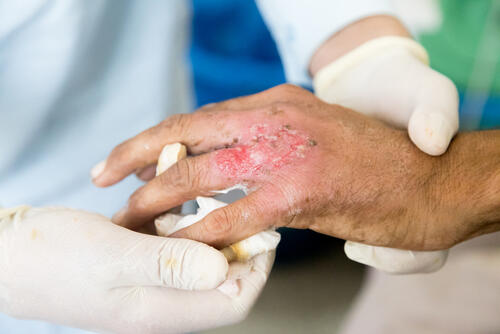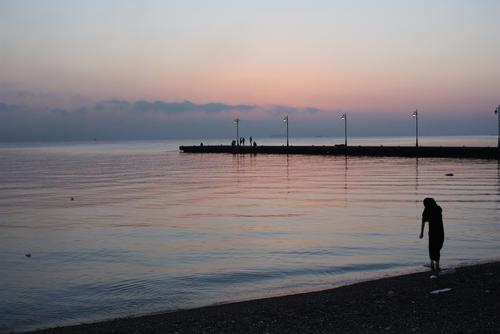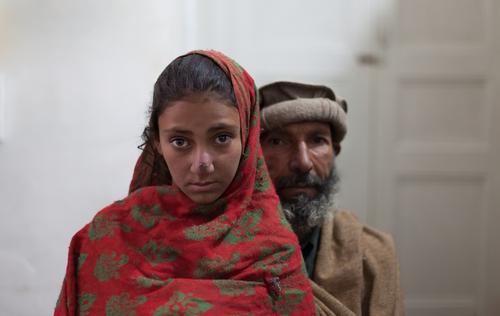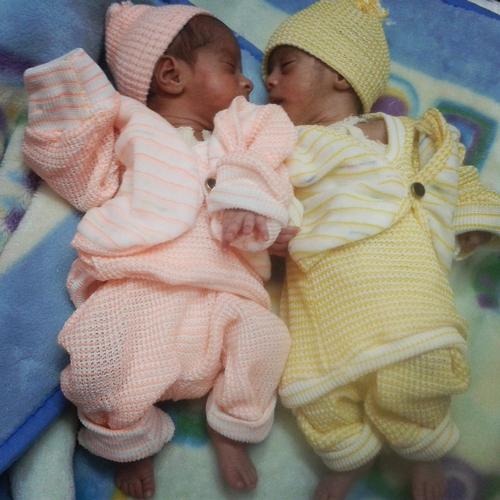An MSF nurse describes a life-changing diagnosis for a patient in Pakistan.
“Eyes without a face.” It’s the first thing I thought when I looked at her. I was working as nurse with Médecins Sans Frontières (MSF) in a town known as Kuchlak. We were in a region near the western border of Pakistan and Afghanistan, and surprisingly running through my mind was a Billy Idol song. Sometimes a challenge in itself is making sense of what we see.
Her eyes; they were brown, sad, and silent. She sat across from me. To her right was her husband. He did all the talking, a common occurrence here. Her face was exposed in the presence of a man, uncommon in Kuchlak. The headscarf was usually the reason I saw only eyes, yet hers sat around her shoulders.
Her face was disfigured: Large, red, swollen lesions occupied the space where her smile should have been, as well as her cheekbones, her brow, her nose, her forehead and her chin. Her husband spoke to us in Pashto. She looked down and lifted her pant leg to show more lesions, then her arms. She was covered. She had been for months.
The woman was in a state of despair, taken over by this illness. You could see the hopelessness draining from her. First one lesion turned up, then the next. Before long she was unrecognisable. She cried quietly as her husband told us, myself and the male nurse beside me, about the numerous trips to doctors and clinics. Her illness was a mystery. The most recent diagnosis was leprosy. She had now come to the MSF clinic for help.
People traveled long distances to reach our clinic for free healthcare, free medications, and answers. This woman had come for more. She came for a reason to live. She had lost all hope in her disease. Her face was unrecognisable and so was her spirit. She had lost the desire to go on. Her husband spoke about how she wanted to die.
Our doctor also diagnosed it as leprosy, but the patient had not come to see the doctor — she was here to see the nurse. They called him Kaka. It means “uncle” in Pashto. Kaka was an older, experienced nurse. The community knew him, loved him, and had a great respect for his knowledge. The woman and her husband needed to hear what Kaka had to say.
She disagreed with the leprosy diagnosis, believing she had a parasite, cutaneous leishmaniasis (CL). It is common in this area of Pakistan and characterised by lesions on the face. It is carried and transmitted by sand flies, and is easily treated at the clinic through injections. MSF has one of the only CL projects in the area. Kaka ran the programme, and he was considered the expert. He looked at me and explained the disease, the lesions, how we test for it and how we treat it. This woman he said did not have CL. There were too many lesions. He’d never seen anything like it. But this woman needed hope and a reason to be there, so Kaka sent her for testing.
The test itself was grueling. The lab tech needed to withdraw from as many lesions as he could to test for the presence of the leishmania parasite, a painful and enduring experience.
Much to our surprise each and every lesion they isolated came up as positive. She was right and we were wrong. This woman was being swallowed up by a parasite and no one knew.
To us the news was shocking. The clinic had never seen a case so severe. To her the news meant a diagnosis, and a cure. The age limit for the programme was 45 years old. Kaka and I thought she was much older. The lesions made it difficult to gauge. Proof of age or identification didn’t exist in this community. We admitted her regardless. Her injections began daily and so did her counseling.
Months later, I was helping with the malnutrition programme in Kuchlak. A child came in with their mother and another female. As they left, the female came to me and took my face in her hands. She smiled with her eyes. She was young and happy. She said things in Pashto, as she looked at me kindly. Kaka asked me if I knew who she was.
I did. I recognised her eyes.
She had been treated for the lesions and her depression, and had been discharged from the programme. She looked like a new person, with a new energy, and a new spirit. The hope we put back in her life would last an eternity.
I saw her around the clinic often after that, and every time she would take my face in her hands. In among so many desperate eyes, she was a grateful reminder of what we were doing.






